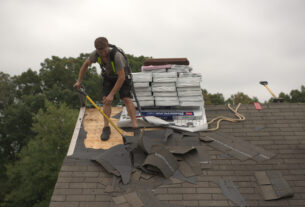When it comes to working in hazardous environments, safety should always be a top priority. One of the most important factors in ensuring safety is the use of non-sparking tools. These specialized tools are designed to prevent sparks from igniting flammable materials, thereby reducing the risk of explosions and fires.
In this article, we’ll take a closer look at what non-sparking tools are, how they work, and why they’re essential for certain industries. We’ll also discuss different types of non-sparking tools and provide tips on how to choose the right ones for your specific needs.
What Are Non-Sparking Tools?
Non-sparking tools, also known as spark-resistant tools or explosion-proof tools, are hand-held devices that are designed to minimize the risk of sparks when used in areas where flammable gases, liquids, or dust are present. These tools are typically made from alloys that contain no iron or steel, such as copper-beryllium or aluminum-bronze.
The primary function of non-sparking tools is to reduce the likelihood of ignition sources in potentially explosive atmospheres. In many cases, these tools are required by law for use in certain industries, such as oil and gas refineries, chemical plants, and mining operations.
How Do Non-Sparking Tools Work?
Non-sparking tools work by minimizing friction between metal surfaces, which can create sparks when struck against each other. This is achieved through the use of soft metals like copper or aluminum, which have lower melting points than steel.
When two metal surfaces rub together with enough force to generate heat, the softer metal will deform first instead of creating a spark. This reduces the risk of ignition while still allowing the tool to perform its intended function.
Types of Non-Sparking Tools
There are many different types of non-sparking tools available on the market today. Some of the most common include:
1. Wrenches and sockets – These tools are used for tightening and loosening nuts and bolts in potentially explosive environments.
2. Hammers – Non-sparking hammers are designed for striking objects without generating sparks, making them ideal for use in areas where flammable materials are present.
3. Screwdrivers – Non-sparking screwdrivers are used for driving screws into place without creating sparks that could ignite flammable gases or liquids.
4. Pliers – Non-sparking pliers are designed to grip and manipulate objects without creating sparks.
5. Cutting tools – Non-sparking cutting tools, such as saws and shears, are used for cutting through metal and other materials without generating sparks.
Choosing the Right Non-Sparking Tools
When selecting non-sparking tools, it’s important to consider several factors, including the type of work being performed, the specific hazards present in the environment, and the materials being handled. Here are some tips to help you choose the right non-sparking tools for your needs:
1. Consider the material composition – Different types of non-sparking alloys have different properties and strengths. For example, copper-beryllium is stronger than aluminum-bronze but is also more expensive.
2. Check industry regulations – Certain industries may have specific requirements for non-sparking tools. Be sure to check local regulations and standards before making a purchase.
3. Look for durability – Non-sparking tools should be built to withstand heavy use and abuse over time. Look for tools that are made with high-quality materials and designed to last.
4. Consider ergonomics – Non-sparking tools should be comfortable to hold and easy to use over extended periods of time.
5. Choose the right tool for the job – Different types of non-sparking tools are suited for different tasks, so be sure to select the appropriate tool for each job.
Conclusion
Non-sparking tools are an essential component of workplace safety in many industries. By minimizing the risk of sparks and ignition sources, these specialized tools help prevent explosions and fires in hazardous environments.
When selecting non-sparking tools, it’s important to consider the specific hazards present in your workplace and choose tools that are designed to meet those needs. With the right tools in hand, you can work with confidence, knowing that you’re doing everything possible to keep yourself and others safe.
References:
1. Occupational Safety and Health Administration. (n.d.). Hand and Power Tools – Frequently Asked Questions. Retrieved from https://www.osha.gov/SLTC/handpowertools/faqs.html
2. National Institute for Occupational Safety and Health. (2012). Non-Sparking Tools. Retrieved from https://www.cdc.gov/niosh/topics/safe-sound/tools/nonsparking.html
3. United States Department of Labor. (n.d.). Safety and Health Topics: Hand and Power Tools. Retrieved from https://www.osha.gov/SLTC/handpowertools/index.html



